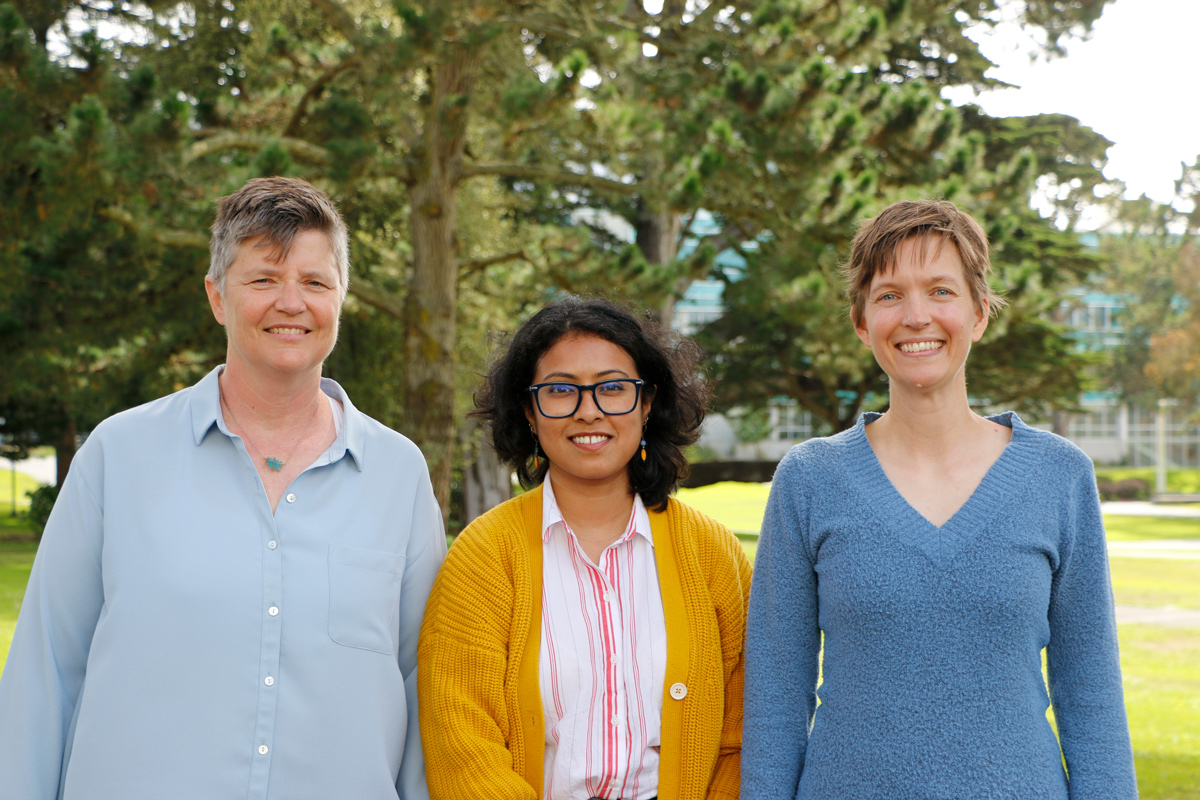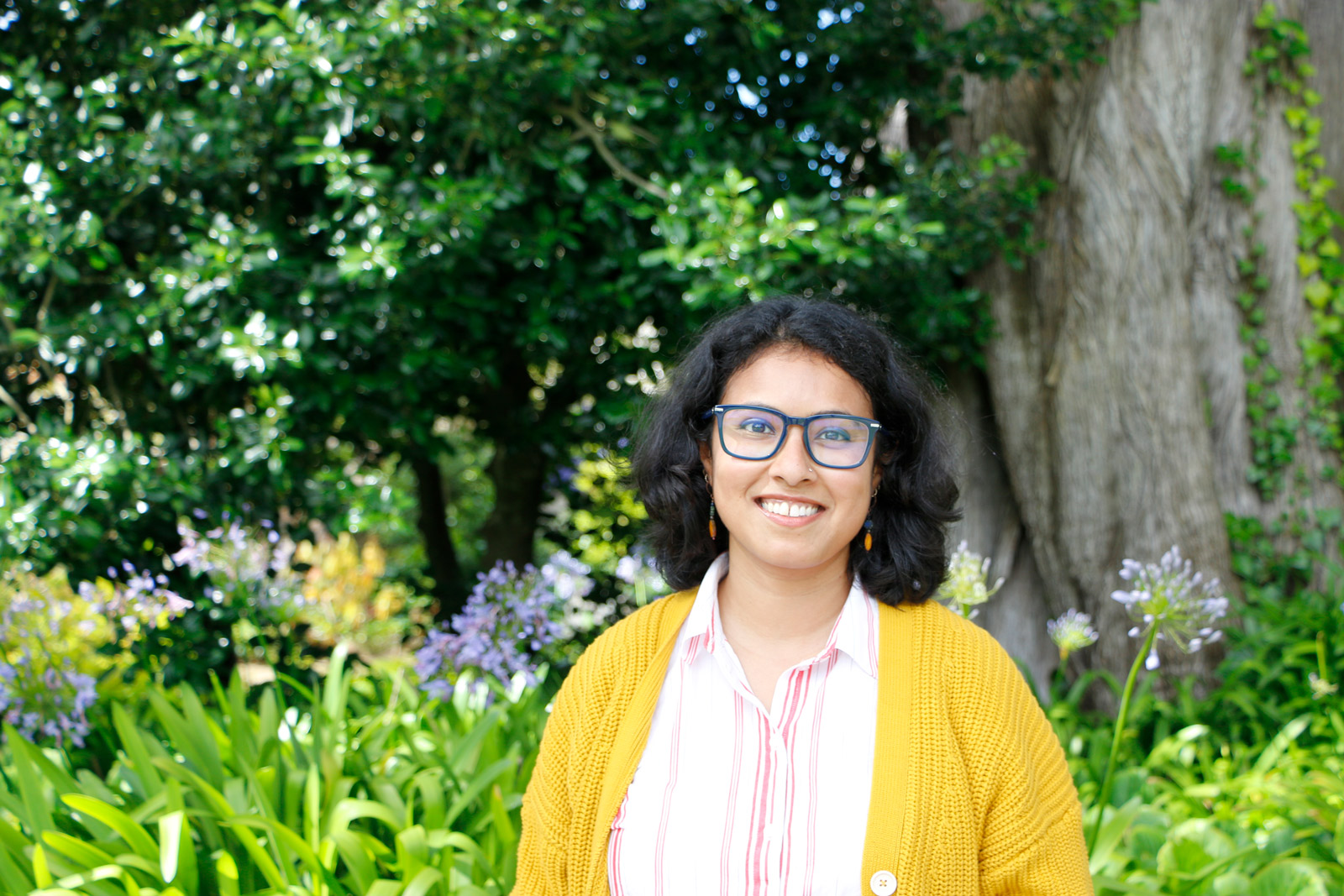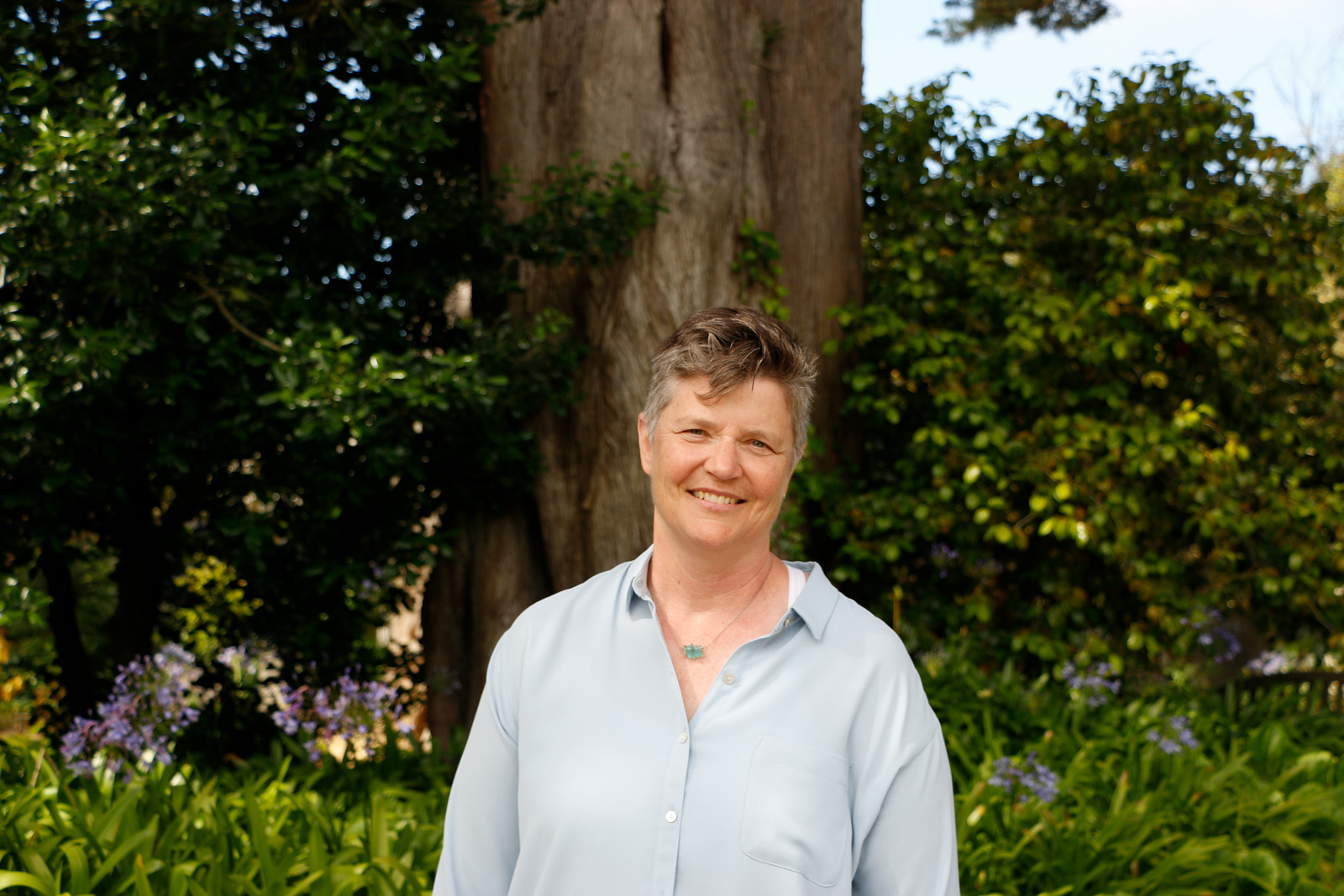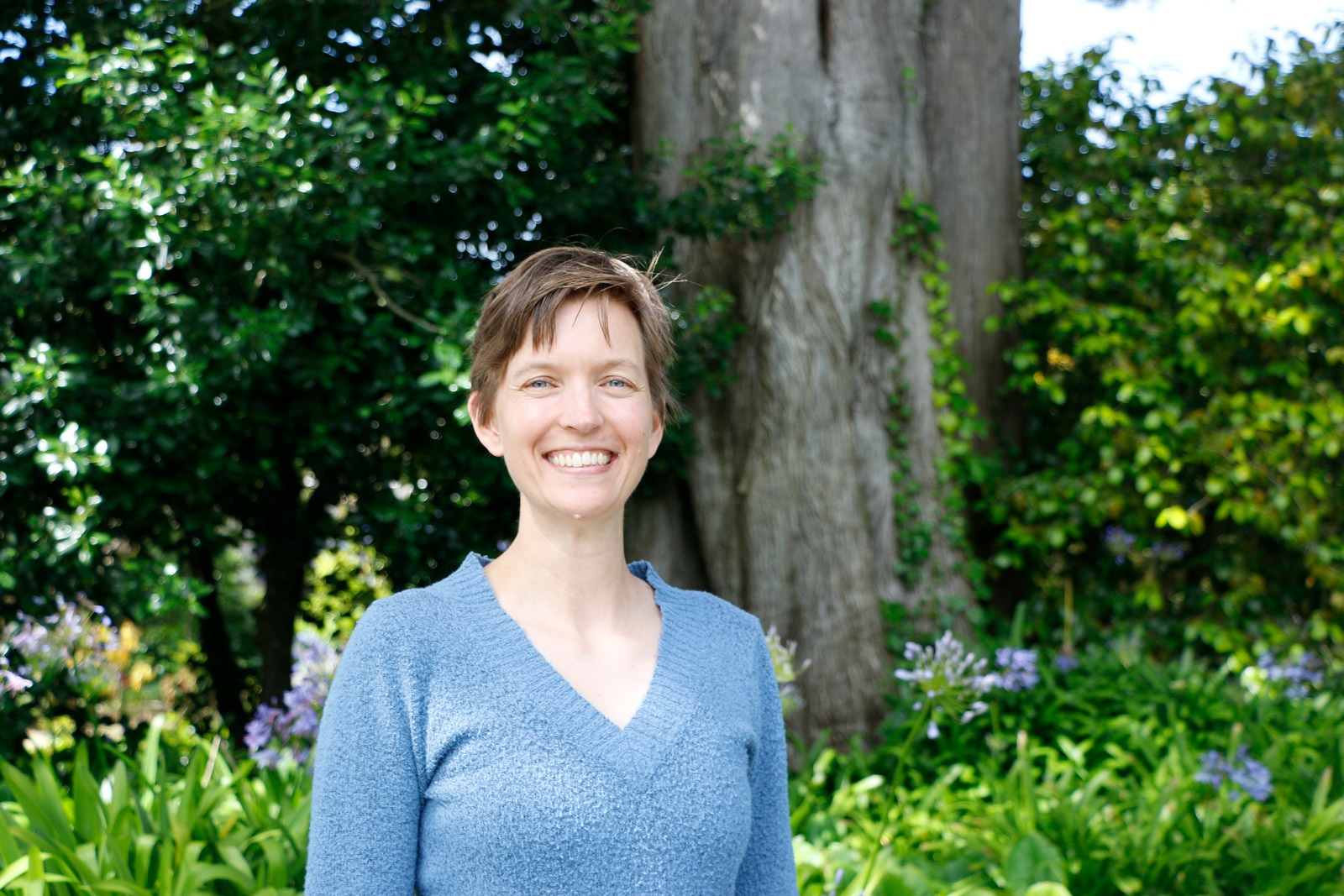
A Hub for Hope
Climate HQ is SF State’s hub supporting climate change-related activities across campus. What started with a single climate certificate has expanded into a host of programs thanks to the launch of the Climate Justice Leaders Initiative (CJLI) in the fall of 2022. In this extended Five Question article, Co-Directors (left to right) Kai Burrus, Aritree Samanta and Autumn Thoyre describe how Climate HQ supports equity-minded leaders and the societal shift needed to address climate change.

Aritree Samanta, Climate HQ Co-Director
Why was Climate HQ created?
A lot of like-minded [faculty and staff] were talking to each other and saying that we need to do something about climate change. When we got a donation to do transformative campus-wide climate work, we asked ourselves: What we can do that is participatory, incorporates voices of all of the disparate places on campus and includes faculty, staff and students? Students told us that they need this umbrella or touchstone that could help coordinate climate-related efforts across campus. We collectively created a vision that translated into what we know as Climate HQ — and that name came from students.
How did CJLI come about and how does it work?
CJLI is the proposal that created our various Climate HQ initiatives supported by a generous donation [from SF State Foundation Board Chair and alumna Neda Nobari]. CJLI consists of faculty from all six [academic] colleges, staff members and students who shaped the various initiatives we’ve divided into education, research and engagement. Education programs include the current climate certificate and the new climate justice education certificate for pre-K – 12 teachers. Under engagement, we have annual rituals like the climate symposium, Earth Week and Climate Action Fellowships that provide students financial support to do climate work. We are funding student research through the Climate Action Fellowship and have a mini-grant program for SF State faculty.
How is SF State uniquely positioned to support climate leaders?
Our students. Talk about all of the impacts of climate change — sea level rise, wild fires, urban heat islands — and the Bay Area is almost like ground zero for all of that. Our students are acutely aware of that and have been working on that. They are already leaders. SF State already has the capacity, action, leadership, talent and expertise within students and faculty. All we needed to do was organize that, give it some structure and find platforms to elevate it.
What else are you planning for Climate HQ?
We want to take our lessons CSU wide. When we talk to other CSU campuses, they are really interested in our model and want to replicate it. We’re trying to incorporate climate change into our SF State studies requirement as something all students fulfill for graduation. This is something that really resonated across all of the CSUs we’ve talked to. More internally, we need to be paying students to work and need more student scholarships for climate work. We set aside a substantial portion of our donor funds toward that, but we are learning that is not enough. We are working very hard on writing grants and finding funding opportunities.
What would you say to someone who doesn’t feel qualified to do something about climate change or work for climate justice?
Find your community of like-minded people so you can place your work within the climate movement. You are probably already doing more than you realize. And if you are not, there is so much happening here that you just need to find your community in order to find your role in this bigger climate movement.

Kai Burrus, Climate HQ Co-Director
Who was involved in establishing Climate HQ?
We collaborated with a dream team of SF State faculty and staff from across campus to develop Climate HQ. As we began discussions, we realized the missing component: students. We had a meeting with students where they talked extensively about what they wanted. This conversation really helped shape the goals of Climate HQ; those conversations are still ongoing. We’ve learned that in order to successfully transform the whole campus with respect to climate change, you need everybody in the room and have their voices heard.
How is Climate HQ inclusive and interdisciplinary?
Because climate change is enormously complex, it stands to reason that the solutions are going to require a holistic approach. It is critical that we include multiple axes of diversity. To ensure that our efforts have an interdisciplinary lens, we secured representation and buy in from all six academic colleges. In addition to academic disciplines, we also actively seek to include people with different cultures, race, ethnicity, gender, and campus roles (faculty, staff, and students). In addition to working to get out of our silos in each college, we also want to make sure we’re not siloed as a campus. Climate change is bigger than SF State. It’s the whole planet. How do we engage with our local communities, California and beyond?
How will Climate HQ establish a sense of climate-minded community on campus?
My dream is that every student, faculty and staff member will be talking about and taking action to address climate change. How will we do that? I think the climate change certificate is a great start because it created space for students to talk, work together and collaborate across campus. Last spring was our first time helping Associated Students’ Environmental Resource Center (ERC) run the annual on-campus Earth Week festivities, and we hope to build on that. We’ll also help ERC with the annual Ecofest this fall and Climate HQ will be hosting other panels and webinars. Our goal is to create annual rituals that become a part of the fabric of what students expect on campus.

Autumn Thoyre, Climate HQ Co-Director
How will Climate HQ support students?
One of the first ways is the original climate change certificate and the new applied climate justice courses that provide students with professional development and hands-on experience. We have created a climate-related Metro pathway for students in their first couple of years at SF State so they can get help fulfilling their GE requirements and earn the climate change certificate. This year, we announced the Climate Action Fellowship that awards students $10,000 to work on a climate-related project with faculty for a year. It can be a creative or hands-on project, an activist project or a research project.
We’re hoping that financial support will enable students to focus on their climate work. There are also opportunities that provide job skills. We’re starting to offer paid internships with Climate HQ, and students are also part of planning curricula like the climate certificate and events like Earth Week.
Climate HQ will have a new climate change certificate to train PK-12 teachers. Why is this important?
We see that in the Bay Area, we can’t go a month without something climate-related affecting people. Everybody in California and across the world should be learning about climate change. There are a lot of PK-12 grade teachers who would like to teach climate change but don’t have the expertise to teach it. High school is a great time to teach kids about climate change. We’re developing this certificate to train teachers so they can teach the next generation of climate change activists and leaders in California and beyond.
How will these climate initiatives support faculty climate work at SF State?
One of the most challenging things about working on climate change is that it can feel hopeless and overwhelming. We’ve created spaces for faculty who felt siloed to come together and talk about climate change. CJLI has two specific programs for faculty. We have launched climate justice faculty learning communities — groups of four or five faculty who support each other’s pedagogy, research and creative activities about climate justice. We also have annual $10,000 mini grants for lecturer and tenured/tenure-track faculty that can be used to fund research, scholarship or creative work related to climate change. Hopefully this will support interdisciplinary collaborations.